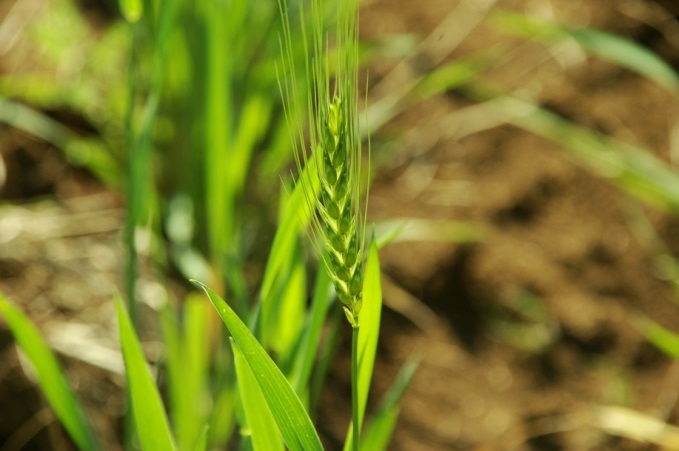How is climate change expected to impact global agriculture and our ability to feed 9 billion people across the globe? Can we reduce climate risks to food systems? What is climate-smart agriculture and what role will it play? These are some of the important questions researchers discussed under the 8th theme at the 2nd International Conference on Global Food Security two weeks ago.
Climate Change Impacts: What and Where?
Climate skeptics often highlight the uncertainty attached to future climate projections. But uncertainties do not diminish the severity of the expected negative societal impacts, especially in the agricultural sector. Climate change is expected to affect global food systems in various ways – by reducing crop productivity in a warming world, by creating food shocks during extreme climatic events, and by changing the spatial distribution of invasive species and pests. Researchers around the world are working to document and predict these effects on different cropping systems using remote sensing, field-trials, and crop-climate models.
During the conference, researchers noted that agriculture is expected to benefit from increasing precipitation and temperature in some crops and countries, including winter crops in Europe (Heidi Webber of the University of Bonn) and rice, maize, and wheat in Nepal (Shobha Poudel of Kyoto University). However, other countries—such as India and Sri Lanka—are expected to see a reduction in crop yields (as described by various authors, including Pinki Mondal of Columbia University, Kuntal Singh of the University of York, Arumugam Ponraj of Indian Institute of Remote Sensing, and Sarath Premalal Nissanka of the University of Peradeniya). A study by Timothy Thomas of the International Food Policy Research Institute (IFPRI) confirmed negative impacts of the higher temperature on the US maize system despite growing yields globally. This collection of impact studies suggests that region-specific adaptation strategies must be proposed and implemented.

Climate Change Adaptations: How?
Researchers reported multiple ways to sustainably combat climate change impacts, buffer vulnerable livelihoods, and maintain food security. Some of the adaptation strategies mentioned at the conference included planting high-yielding or drought-tolerant crop varieties in Canada, Malawi, and Tanzania (Hong Wang of Agriculture and Agri-Food Canada, Stein Holden and Ruth Haug of the Norwegian University of Life Sciences), managing nutrients more effectively and sustainably in China (Mengru Wang of Wageningen University), and promoting index-based livestock insurance in Kenya (Nathan Jensen of Cornell University). Syed Faiz-ul Islam of the University of Copenhagen explained the role of gender and other socio-economic variables in the adoption of climate-smart technologies in the Philippines. The complexity of climate-smart agriculture in Belize—including prioritization and the potential for adverse outcomes—was also highlighted by Rico Kongsager of the National University of Ireland.
So What is Climate-Smart Agriculture?
In his keynote address, Bruce Campbell from the Consultative Group for International Agricultural Research (CGIAR) noted: “We frame our work within the concept of climate-smart agriculture, which attempts to address productivity, adaptation and mitigation challenges, as well as the trade-offs and synergies amongst those things.”
Climate-smart agriculture (CSA) embraces the concept of complexity within food systems and takes an integrative, multi-level approach that addresses both systemic barriers to reducing risks of climate change on agriculture and develops location and context-specific solutions to issues producers are facing. The CSA approach aims to integrate local knowledge and traditional agricultural practices with broader regional and national policies. Within such a complex system, tradeoffs are inevitable; the CGIAR has developed a Climate Smart Agriculture Prioritization Framework to provide funding agencies and policymakers with a guide to developing portfolios, and allocating resources based on evidence, desired outcomes, and barriers to adoption. Addressing social, environmental, and economic sustainability through a CSA approach builds on synergies within agricultural systems and maximizes positive outcomes across sectors. Many conference presenters believed that this type of integrated approach is necessary to address the impacts of climate change on agriculture.
Food System Sustainability for People and the Planet
Is it feasible to maximize yields and utilization under changing environmental conditions while minimizing the impacts of climate change on agriculture and food security? Conference presenters revealed new tools, methods, and frameworks for studying the complexity of agriculture and climate change and identifying potential solutions to reducing the impacts of climate change on production and distribution. Researchers in this field are using these novel tools and ideas to integrate projections with practice, evidence with context-specific constraints, and agricultural data with food security outcomes. In the face of planetary uncertainty, we must harness synergies across sectors and disciplines, and orient research toward outcomes and actions to drive sustainable food systems.

